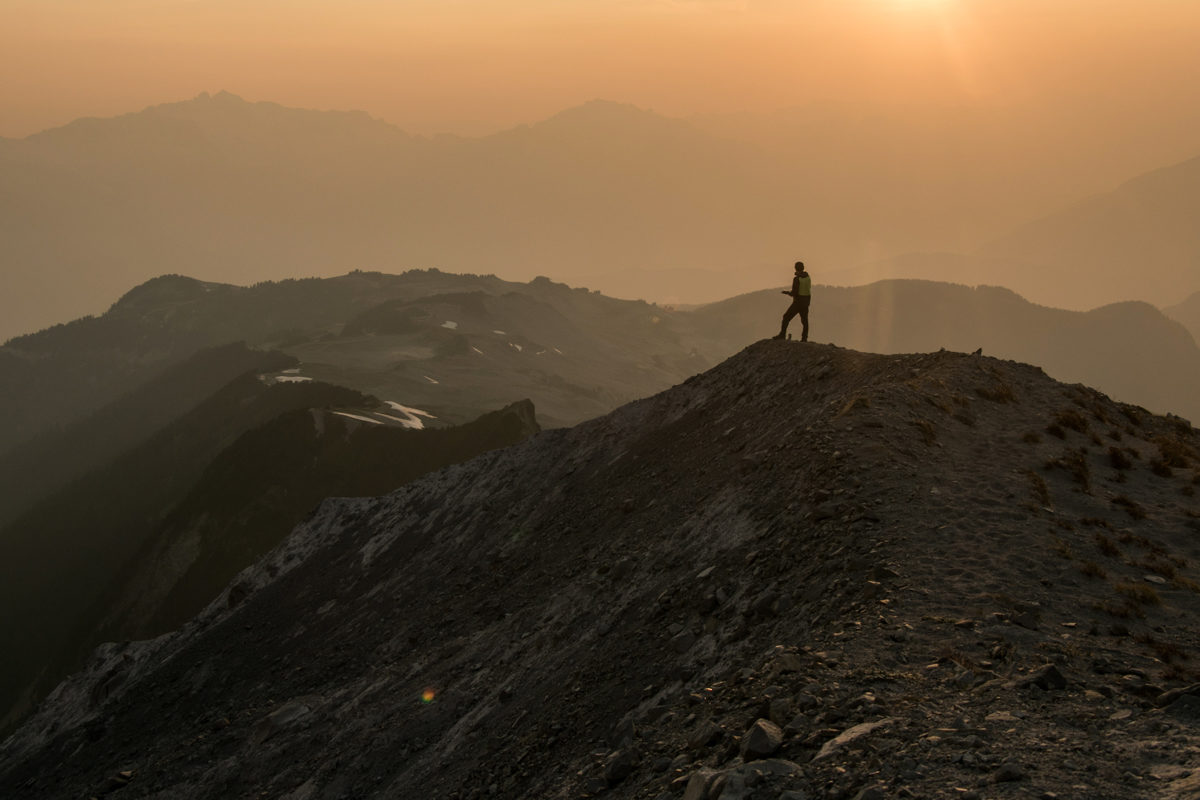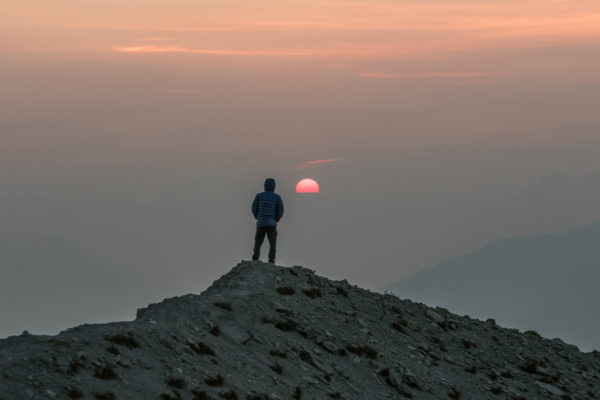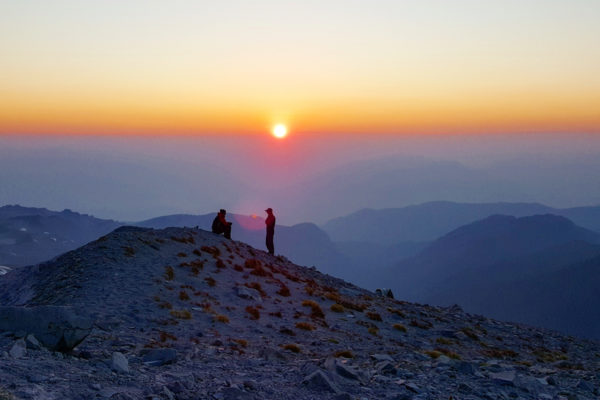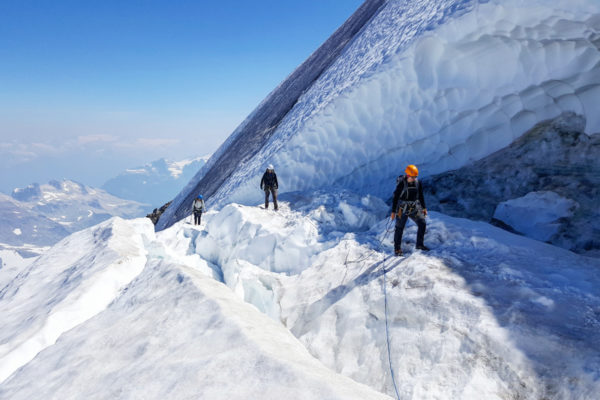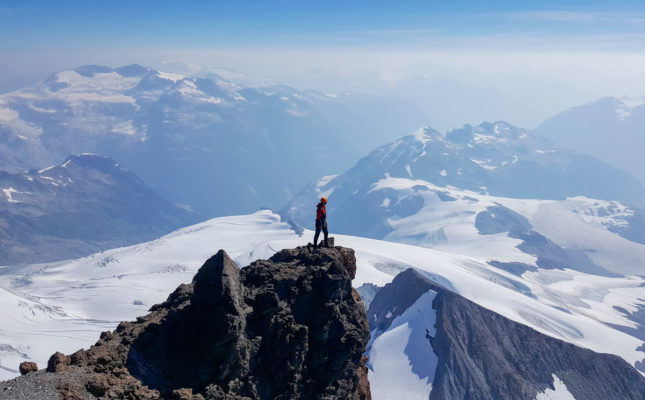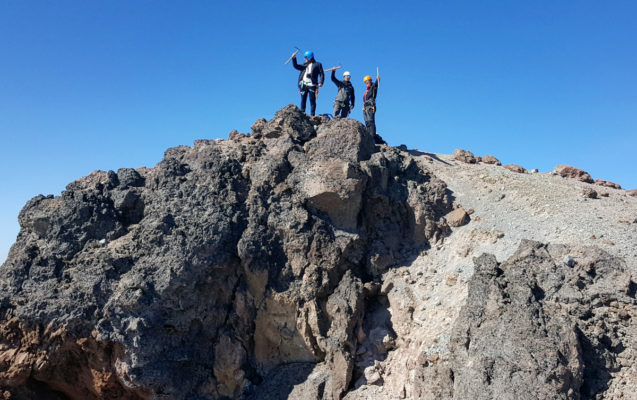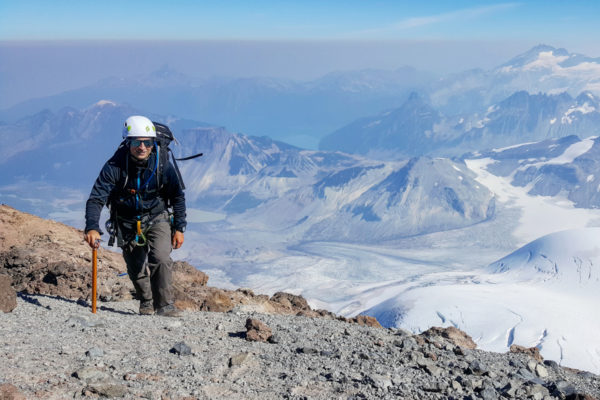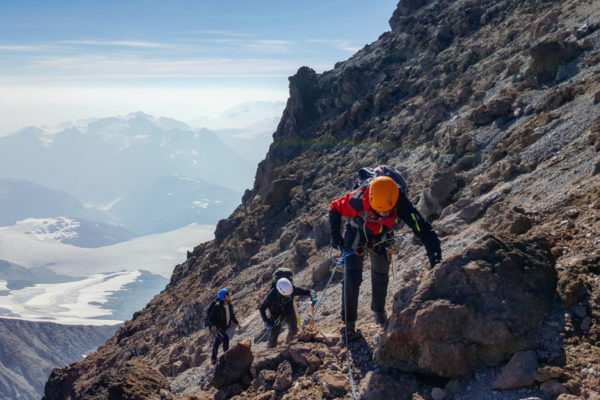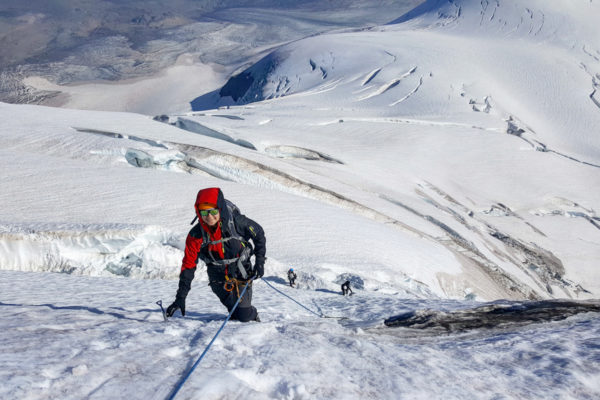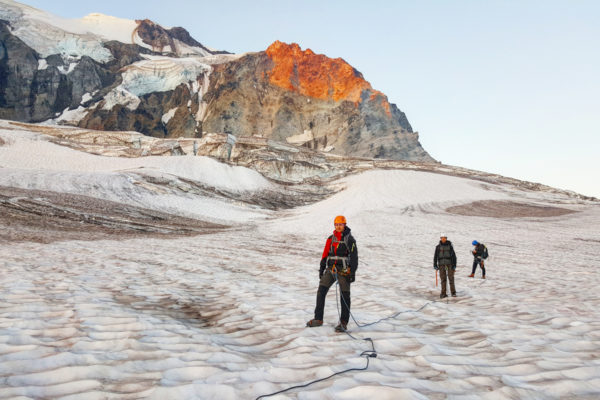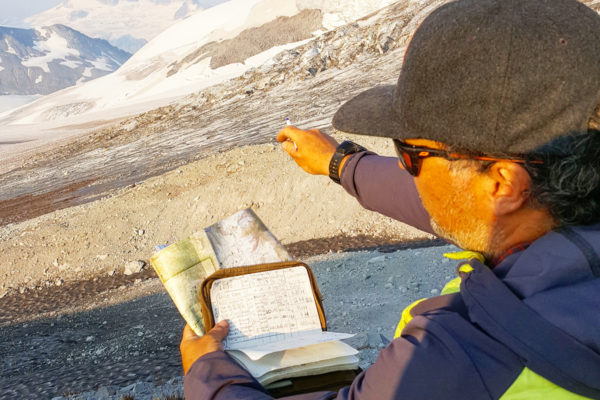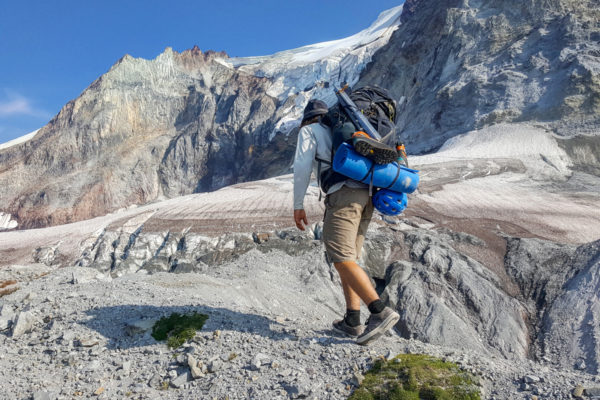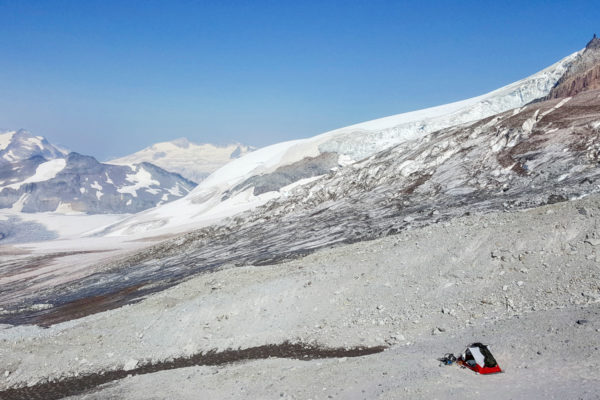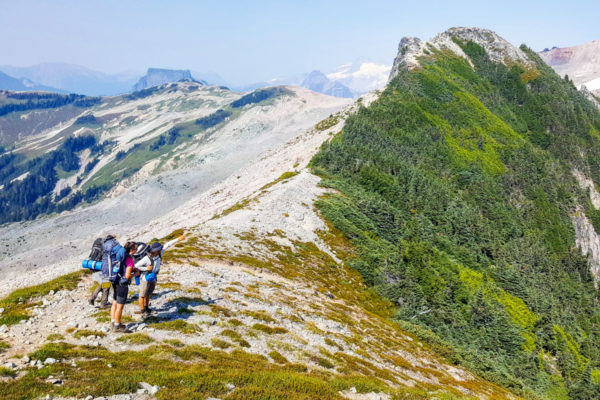Trip Report
Mt. Garibaldi 2675m
August 20th, 21st & 22nd 2018
On assignment for Whistler Adventure School this week with a strong and keen group of students. This was to be Will, Ondrej and Marketa’s last and final leg of a long learning journey that started back in July.
The program is design to introduce students to the work of alpine guiding and mountaineering applications, using old and new technics of climbing and moving through complex alpine terrain. Thanks to Chris Lawrence and all his amazing teaching, the students had spent by now several days of training and learning before I took over for the last stretch of the course.
There was a lot of smoke in our area and the air was really bad, thanks to all the wild fires burning around BC. So we decided to opt for an objective that would require a minimum approach to the alpine where the air quality would improve quickly. Our objective was to climb Mt-Garibaldi 2678m Northeast face, a predominant volcanic mountain partly covered in glaciers on its north flanks and easily visible from downtown Squamish on a clear day. We met at a local cafe on our first day to review the route plan and go over the objective.
Day 1
Day one consisted of driving up this very rough 4×4 access road up Brohm ridge right to the tree line, the elevation around 1800m on our coast that you transition into the alpine. We left the truck behind with heavy backs and fresher air.
The hike up Brohm Ridge was stunning with undisturbed views of the west flanks of Dalton Dome, one of the three summits forming the Garibaldi Massif. After climbing a sort section of scrambling the grand views of the Park started to reveal it’s grandeur with Table Mountain, an unmistakable tuya volcanic formation barely visible through the smoky haze.
We reached the end of the ridge at 2100m and found great camping spots right next to the Warren Glacier, providing us with cooler air and fresh water. After setting up camp and some dinner, we hiked to the moraine, a dirt spine of loose rocks created by glaciers, to a vantage point over the glacier, where we could see parts of our route that would cross the glacier the next day and assess the crevasse conditions.
These students had practiced Crevasse Rescue scenarios and technics prior to our trip and felt confident with their skills. Travelling on glaciers can be dangerous and climbing parties are often roped together in order to save each other in the event of a snow bridge collapsing under their own feet. We went to bed early expecting an early start the next day.
Summit Day
4am alarm clock, followed by coffee and porridge is always a good reminder of a great day ahead. We left camp at 530am, hiked over the moraine and made our way to the edge of the glacier where we strapped our crampons and attached ourselves with 7m of rope between us and the extra rope tuck away at both end ready to be used in the event that one of us would fall into a crevasse.
We travelled across the north face of Garibaldi far away from the looming seracs, huge blocks of glacier precariously hanging over steep parts of the mountain, heading to the ramp that would give us access to the north east shoulder. We climbed the ramp weaving around huge crevasses, fanning far left off the ramp to avoid dead ends. It is now 730am, so we stopped for water and food with the Northeast Face now visible ahead.
The next part of the trip would be the most difficult and route finding was going to be the main “crux”, a hard section of a specific climb. After carefully reassessing our options, we felt strong about our plan and it just needed to be executed. The crevasses, some of them at least 70m deep, change every year and their locations and state can’t always be referred to previously reported conditions from other parties.
We easily gained the upper reach of the face and navigated around a few large crevasses before arriving to the Bergschrund, a large horizontal crack at the head of the glacier created when the ice/snow field become steeper and the glacier disconnect from the mountain above. It was now 900am. To our relief the Bergschrund was filled in on the far left and allow access to the face above, our final step before gaining an easy ridge to the summit. A steep snow and ice, around 50degrees slope, requiring front point crampons technical steps and ice axe placements.
The whole team made it to the ridge and an easy scramble took us to the summit. We arrived on top at 1030am under blue skies, 15C temps, light winds and visible smoke all around. A few handshakes and hugs would be in order for a job well done. We sat on the summit for an hour contemplating our accomplishment and congratulating our achievement.
Unfortunately, the smoke prevented us from views of Squamish, The Tantalus and other farther mountain ranges. We started our descent at 12noon, traced our up track down and arrived back at camp at 1530pm with an exciting surprise of a wolverine track that we followed down and ended up saving us 1/2hour. 9hour round trip. We rested and had dinner looking at the orange sun set with our minds full of joy and personal pride.
Exit Day
We took advantage of the weather and location and headed back to the glacier for one final exercise of crevasse rescue, where every student had the chance to be rescue out of a real life crevasse and relying on each other’s skills learned this past summer. We returned to camp for lunch and head down Brohm ridge where our truck was parked. A bumpy drive down and off the mountain safe by 1700pm.
Relevant Alpine Conditions:
- Low temperature 7C
- High temperature 23C
- Snow was firm in the AM and soft in the PM.
- Crampons was used while on the glacier.
- Crevasses were well bridged and travel was straightforward thanks to the above average snow fall last winter.
- The Bergschrund was nicely filled in and access to it was possible from far right before traversing far back left.
- Rock fall hazard was a concern during the traverse to the Bergschrund and avoided by fast travelling that expose section.
- We used 3 snow pickets and 2 ice screws to protect the expose and steep sections of the Northeast face.
- No rock protection required for the loose and easy summit scramble.

